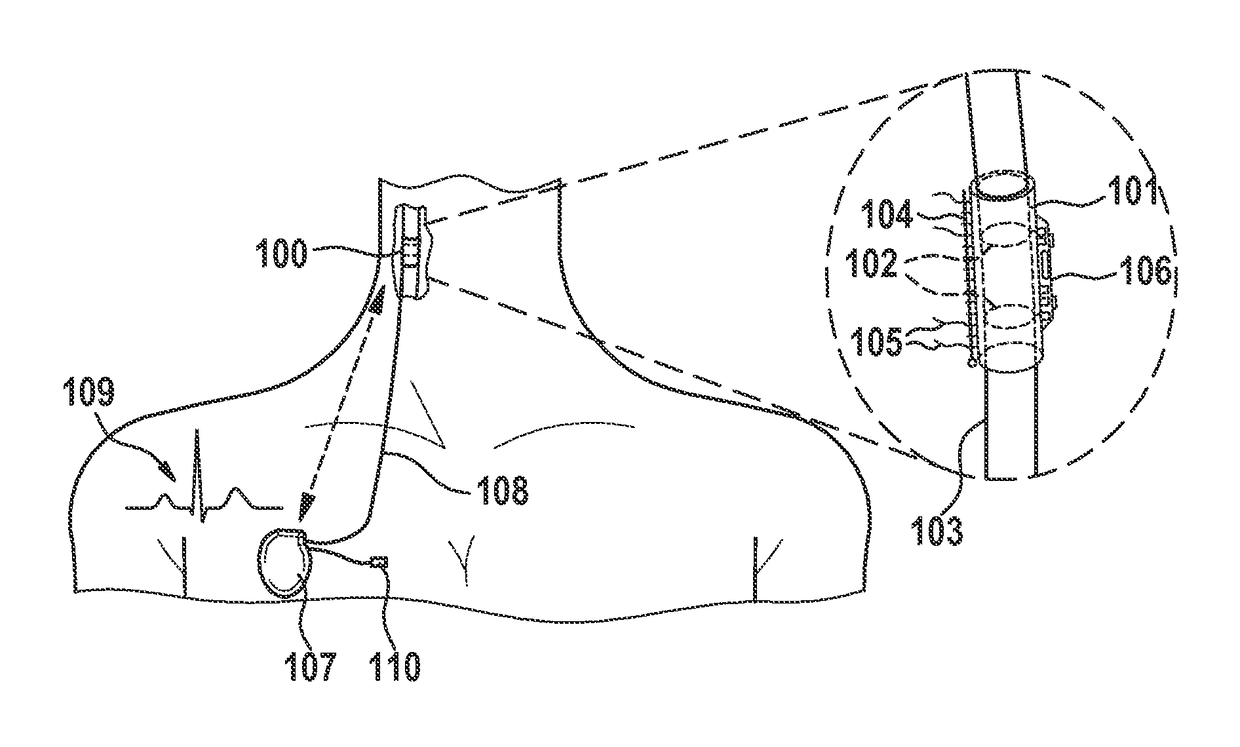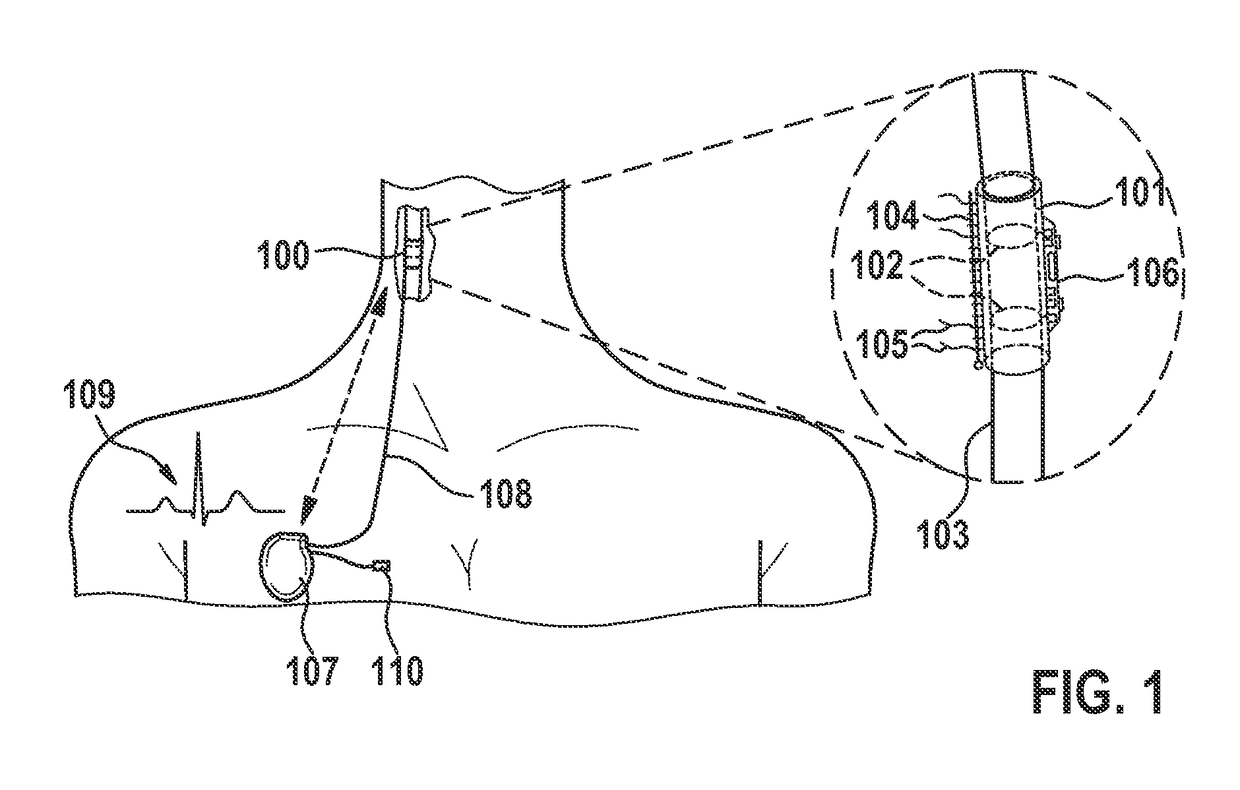Nerve cuff stimulation electrode, control device for a vagus nerve stimulation system, and vagus nerve stimulation system
a vagus nerve and electrode technology, applied in the field of nerve cuff stimulation electrode, control device for vagus nerve stimulation (vns) system, and vns system, can solve the problems of inability to measure arterial or venous pressure waveforms, prior art vns for chf apparatuses lacking these measurement capabilities, and generally lacking monitoring capabilities for disease progression. , to achieve the effect of eliminating distortion and high complian
- Summary
- Abstract
- Description
- Claims
- Application Information
AI Technical Summary
Benefits of technology
Problems solved by technology
Method used
Image
Examples
Embodiment Construction
[0053]According to an exemplary embodiment of the invention as shown in FIG. 1, a nerve cuff stimulation electrode 100 is constructed, using a silicone rubber tube 101, with at least two exposed Pt / Ir (or equivalent material) ring contacts 102 in its interior wall in contact with the vagus nerve 103 surface, and a closing structure 104. The cuff stimulation electrode 100 can be self-coiling, or it may include other closing mechanisms, such as a piano hinge with a nylon suture. Biocompatible strings 105 are built on the cuff stimulation electrode 100 outer wall to open it for easy implantation around the nerve 103. Electronic circuitry 106, which may include a pulsation sensor, a triaxial accelerometer, and associated front-end electronic circuitry, is built on the cuff stimulation electrode 100 outer wall and / or associated assembly structures.
[0054]In an exemplary embodiment, the ring contacts 102 are replaced by multiple contacts around the nerve 103. Local bipolar stimulation betw...
PUM
 Login to View More
Login to View More Abstract
Description
Claims
Application Information
 Login to View More
Login to View More - R&D
- Intellectual Property
- Life Sciences
- Materials
- Tech Scout
- Unparalleled Data Quality
- Higher Quality Content
- 60% Fewer Hallucinations
Browse by: Latest US Patents, China's latest patents, Technical Efficacy Thesaurus, Application Domain, Technology Topic, Popular Technical Reports.
© 2025 PatSnap. All rights reserved.Legal|Privacy policy|Modern Slavery Act Transparency Statement|Sitemap|About US| Contact US: help@patsnap.com



